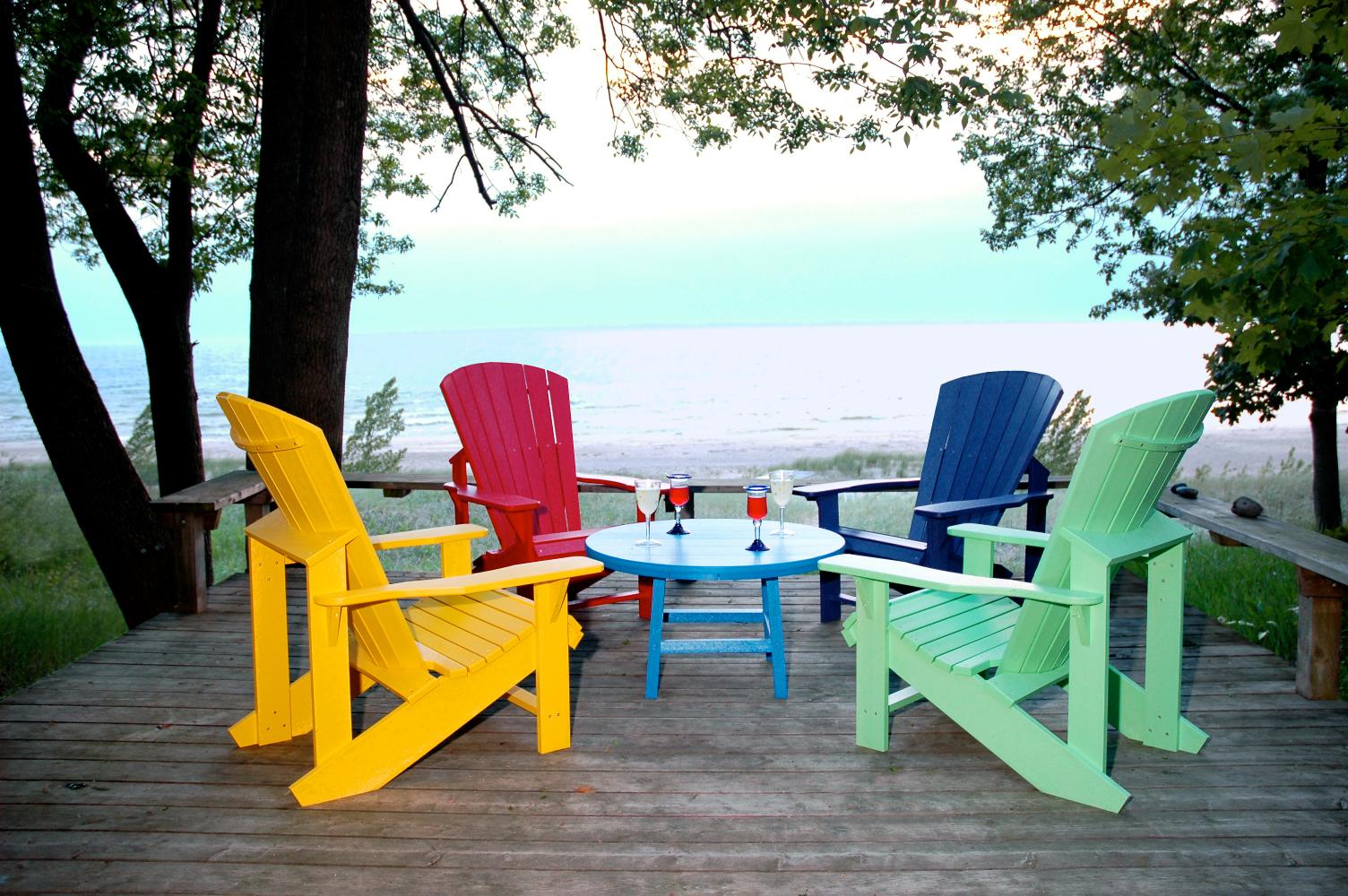
By Amanda Baggaley-Lacerte
I know that summer is upon us when muskoka chairs emerge from their winter storage and show up on the porches and in the backyards of Londoners’ homes and cottages.

Unlike in years past, where we cherished the natural look of weathered cedar, this year many are opting for a more colourful touch to the muskoka/adirondack chair. Our passion for decorating isn’t limited to just our interiors any more.
Consider painting two chairs on the front porch the same hue as the accent colour on your home. For a co-ordinated exterior look, for example, paint matching muskoka chairs the same colour of slate as your shutters and front door. Or, for a look with more pizzazz, choose a tartan red or dried plum.
A grouping of muskoka chairs each painted a different colour adds a playful element to a backyard or a cottage setting. Add whimsy and interest to any outdoor space by painting a set of four chairs four different colours of the same intensity. For example, pick four co-ordinating pastel shades such as creamy butter, beach sand , barely white and a gentle organic blue . Alternatively, choose a colour scheme with equally intense, brilliant (& trendy) hues like lemon yellow, turquoise, berry red and freshly squeezed orange!
Be creative and use two colours. Paint every other board the same colour. This creates the effect of stripes. Replicate the look of Cape Cod by pairing white with a medium country blue or a mid-taupe.
So, whether you are planning to breathe new life into an old chair that has spent one too many summers (or winters) outdoors or you are putting your own personal stamp on a new piece, keep the following tips in mind.
• Remove any loose or peeling paint by scraping or sanding.
• Apply an alkyd based (oil) primer to previously stained and/or varnished wood surfaces. This promotes good adhesion and will prevent the old stain colour and rusty nail heads from bleeding through the freshly painted surface.
 • New wood should be primed with an alkyd primer too, especially cedar wood. Certain types of cedar “bleed” through paint because moisture carries water soluble colour extractives (tannic acid) contained in the wood through the paint film.
• New wood should be primed with an alkyd primer too, especially cedar wood. Certain types of cedar “bleed” through paint because moisture carries water soluble colour extractives (tannic acid) contained in the wood through the paint film.• Top coat with either a latex or an alkyd exterior paint.
• Choose flatter finishes for a more rustic look or for furniture that is not in great condition, as a shiny paint will only accentuate imperfections.
Ahh, welcome glorious, glorious summer and all it’s colourful splendour! Do you decorate seasonally?? Tell us what you change with the seasons…
No comments:
Post a Comment